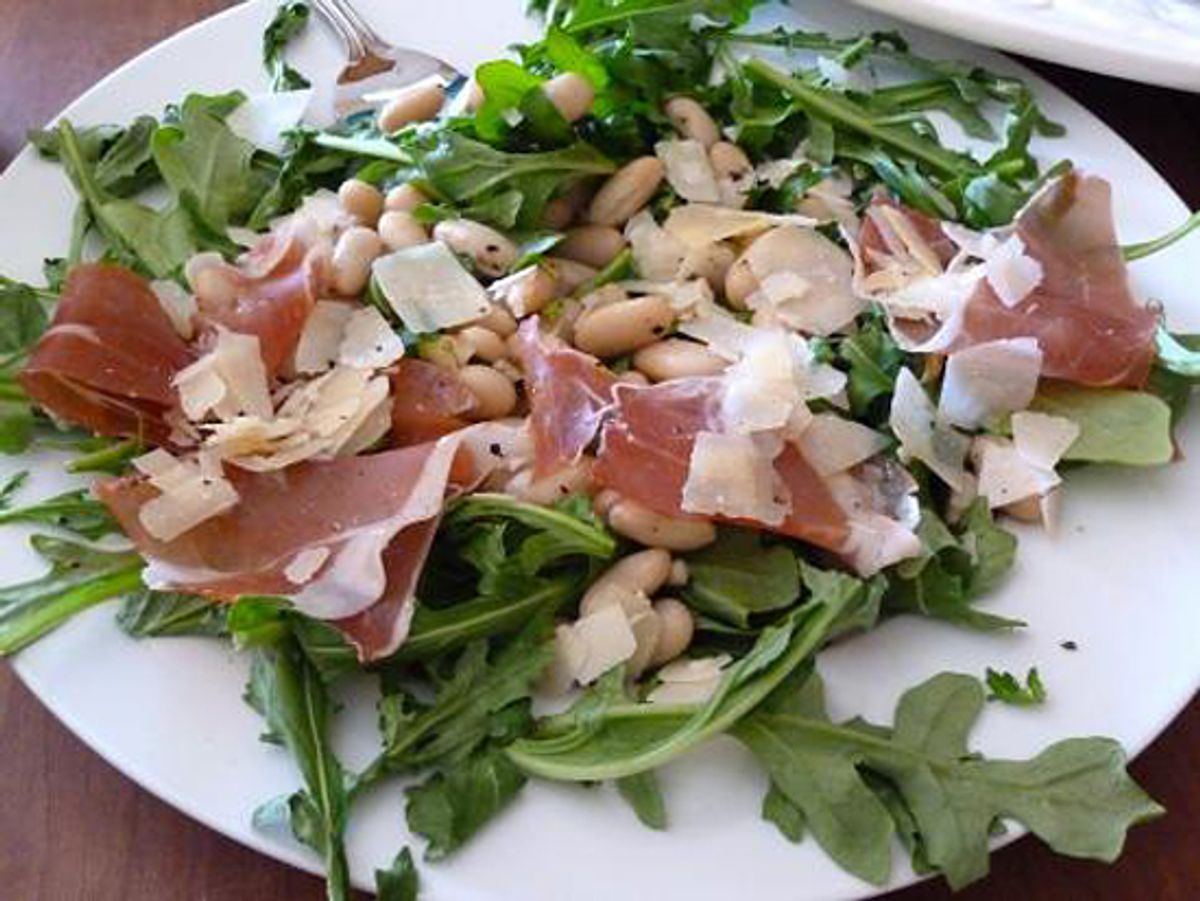While my Italian vocabulary is limited to a few food names, both of my daughters can now add speaking Italian to their ever-growing list of Things We Know That Mama Does Not. In their public school, my kids are learning Italian in a holistic and experiential way, meaning through play, songs, and cultural activities. And if you're going to learn about Italian culture, you're going to learn how to cook. Those lucky kids!
Through her Italian class at school, my daughter learned to make a simple bruschetta di pomodoro. As a six year old, she proudly taught me how to make it, with the essential first step of rubbing a garlic clove on the freshly toasted cut edge of bread before adding olive oil, salt, pepper, basil and diced tomato. She also taught me to pronounce its name correctly: "brus 'ketta."
The name for bruschetta, which originated in central Italy in the 15th century, is derived from the verb in the Roman dialect "bruscare," meaning "to roast over coals." The story goes that bruschetta was invented by Italian olive growers, who would toast some bread over the fireplace in the oil pressing room so that when the freshly pressed olive oil emerged, they could taste the new batch. The original snack involved rubbing the fire-toasted bread with garlic, then sprinkling on the olive oil, and adding a pinch of salt.
My daughter, with her love of Italian food, especially loves the simple, rustic cooking at a restaurant in San Francisco's North Beach. L'Osteria del Forno used to serve an antipasto featuring white beans, arugula, parmesan and Speck, the smoked prosciutto. We loved it so much, I replicated it at home, puréeing the white beans as a base for a hearty bruschetta. The arugula, shaved parmesan, and prosciutto are layered on top of the garlicky bean purée layer, and a squeeze of lemon adds brightness, like the Tuscan sun. This makes a fantastic appetizer or light meal. It's no longer on the menu at the restaurant, but it is on regular rotation in our cucina. It's a crowd-pleaser, tasty to the eyes and mouth. You could call us mangiafagioli (bean eaters), as the cannellini bean-loving people are known in Tuscany.
Bruschetta with Tuscan White Bean Purée, Arugula and Prosciutto
Makes 12 pieces
Ingredients
Bean puree
- 1 can white beans (I use cannellini, but you can use any white bean you like); drained and rinsed with the cooking liquid reserved
- 1 Tbsp basil, minced
- 1 Tbsp italian parsley or cilantro, minced
- 3 cloves of garlic
- 2 tsp plus 2 Tbsp high quality extra virgin olive oil
- salt and pepper to taste
Bruschetta
- 1 crusty, rustic baguette or ciabatta
- 2-3 whole cloves of garlic, skin removed
- 1 cup Tuscan White Bean Purée
- 3 ounces of speck or prosciutto (about 5-6 slices) (I prefer Volpi brand).
- a handful of arugula-- about 1 cup
- 1/2 lemon
- 1/2-1 cup freshly shaved Parmesan cheese
- extra virgin olive oil for drizzling
- salt and pepper to taste
Directions
Bean puree
- Place all ingredients into the bowl of a food processor or blender, or use a stick blender as I did. Add 2 Tbsp of the reserved cooking liquid. Process for a few seconds at a time to desired texture. I like mine to be on the coarse/rustic side.
- Stir in 1-2 Tbsp of olive oil and additional cooking liquid, to taste and desired consistency.
- Add salt and freshly ground black pepper to taste. If you are using this for bruschetta, keep in mind that the prosciutto is very salty. If using as a dip for crudités, salt to taste.
Bruschetta
- Cut loaf of bread lengthwise, and then into about 6 segments (making 12 halves total).
- Toast with cut sides up in an oven until lightly golden brown.
- Take a clove of garlic and rub the cut side of each piece of bread while still warm. This will impart an irresistible garlic fragrance and a golden sheen.
- Drizzle each piece with a little olive oil.
- Spread about 1 tsp of the white bean purée onto each piece of bread.
- Tear prosciutto slices into halves, and layer a half slice of prosciutto onto each piece of bean pureé-topped bread.
- Add 3 leaves of arugula to each piece.
- Squeeze a bit of lemon juice onto each assembled bruschetta. (Make sure to do this before topping with cheese, or else the cheese get a bubbly texture.)
- Add a few shavings of parmesan and freshly ground black pepper.
Recommended accompaniments: olives, a tomato and basil salad, San Pellegrino and chianti or prosecco.



Shares